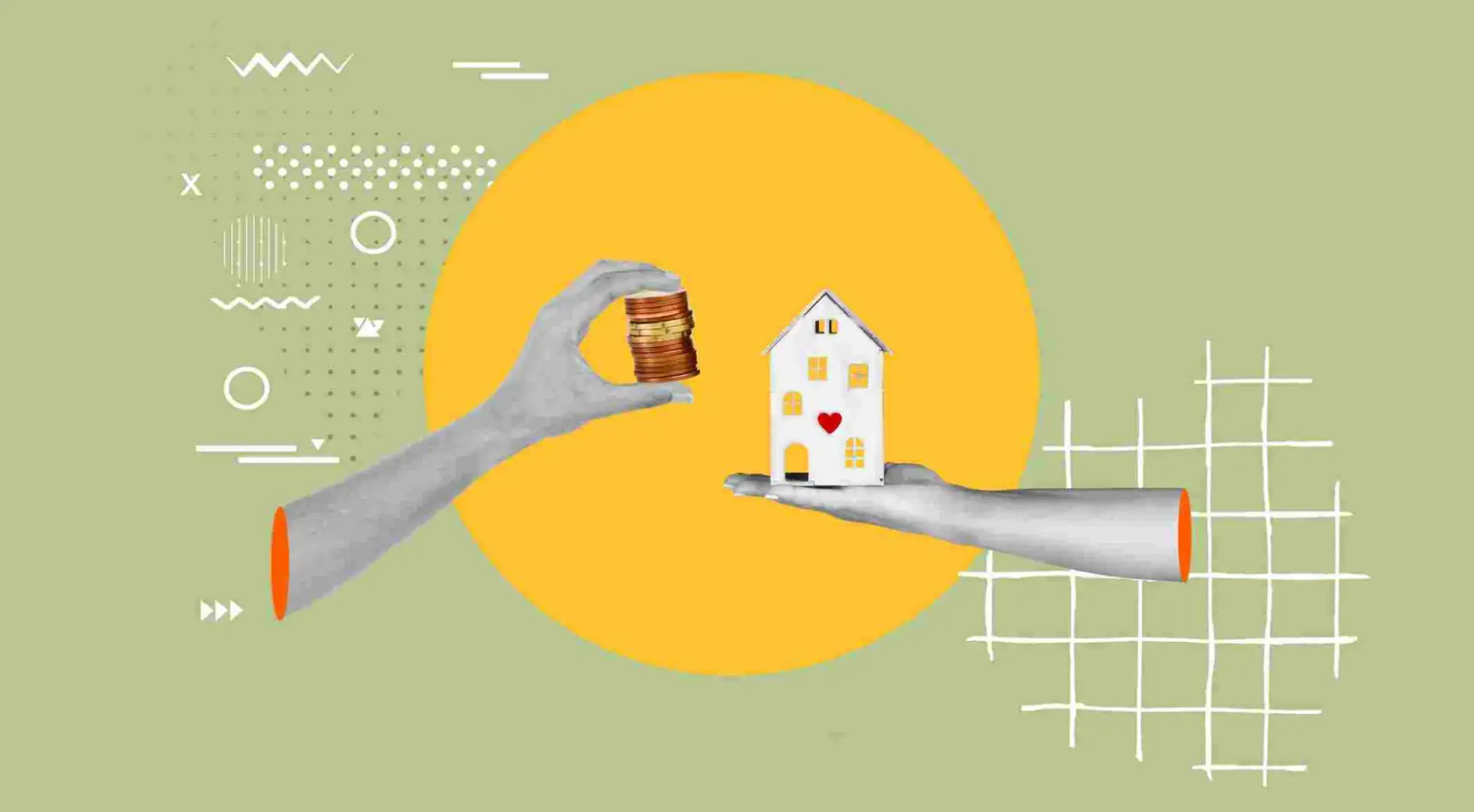What Is a Second Mortgage?

A second mortgage allows homeowners to borrow against the equity in their home, providing access to funds for expenses like home improvements or debt consolidation. Understanding the differences between home equity loans and HELOCs, along with their benefits, risks, and alternatives, can help you decide if a second mortgage is the right financial move for you.
A second mortgage is a type of loan that allows you to borrow against the equity you have built in your home.
Unlike a primary or first mortgage used to purchase the property, a second mortgage is secured by the existing equity in your home.
It’s called a second mortgage because the lender’s claim is subordinate to that of the first mortgage lender. If a homeowner defaults, the primary lender is repaid before the second mortgage lender.
Homeowners might consider a second mortgage for various reasons, such as consolidating high-interest debt, funding home improvements, or covering significant expenses like education or medical bills.
Types of Second Mortgage Loans
The two primary types of second mortgages are home equity loans (HELs) and home equity lines of credit (HELOCs). Each option has distinct features, benefits, and drawbacks.
Home Equity Loan (HEL)
Sometimes referred to as a “lump sum” loan, home equity loans provide a one-time, upfront payment that you repay in fixed monthly installments with interest over a set term, ensuring a predictable repayment schedule for the duration of the loan.
Home Equity Loan Pros and Cons | |
Pros | Cons |
Fixed interest rates, offering predictable payments | Less flexibility compared to a HELOC |
Interest rates that are typically lower than other loan types and credit cards | Requires immediate repayment, regardless of whether the funds are fully utilized |
Ideal for homeowners who need a specific amount of money for a defined purpose | Two mortgage payments |
The repayment terms for a home equity loan typically range from 5 to 30 years.
Home Equity Line of Credit (HELOC)
A HELOC is a revolving line of credit that provides flexible access to funds.
Instead of receiving a one-time lump sum amount as you would with a home equity loan, a HELOC gives you a borrowing limit (or credit limit). As you pay down the balance, you can access funds from the credit line whenever needed, similar to a credit card.
HELOC Pros and Cons | |
Pros | Cons |
Interest rates that are typically lower than other loan types and credit cards | Variable interest rates, leading to fluctuating payments |
Flexible borrowing and repayment | Risk of overspending due to easy access to funds |
Interest charged only on the amount borrowed | Two mortgage payments if you carry a balance on your HELOC |
HELOCs allow homeowners to borrow up to a certain limit during a draw period, typically 10 years, and repay during a repayment period, often 10-20 years.
How a Second Mortgage Works
A second mortgage is a lien placed on your property with an existing home loan. By taking out a second mortgage, you are borrowing against the portion of your home you’ve already paid off.
To qualify for a second mortgage, lenders evaluate several factors:
Loan-to-Value (LTV) Ratio: Lenders assess the amount of equity in your home. Typically, you can borrow up to 85% of your home’s value minus the balance of your primary mortgage.
Interest Rates: Second mortgage rates are generally higher than primary mortgage rates but usually lower than rates for unsecured loans and credit cards.
Repayment Structure: Repayments can be structured as monthly payments (for home equity loans) or flexible payments during a draw period and monthly payments during the repayment period (for HELOCs).
Second mortgages come with a level of risk covered later in this article.
Second Mortgage Benefits
Unlike other types of loans, such as auto or student loans, you can freely use the money from your second mortgage.
Other advantages second mortgages offer include:
Second mortgages allow access to the equity in your property without selling it.
Lower interest rates compared to personal loans and credit cards make second mortgages a popular option for consolidating high-interest debt.
You can use a second mortgage to fund renovations that increase your home’s value.
How to Qualify for a Second Mortgage
The application process and eligibility requirements for second mortgages are similar to first mortgages.
To qualify, you typically need:
Sufficient Home Equity - Lenders require you to have at least 15% to 20% equity in your home.
Good Credit - You usually need a credit score of 620 or higher, though requirements may vary.
Stable Income and Low Debt-to-Income Ratio - Demonstrating the ability to repay is critical.
The application process involves:
Documentation - Lenders require proof of income, such as recent paystubs, W-2s, and tax returns (especially if you are self-employed), as well as details on your primary mortgage.
Lender Evaluation - Lenders need to ensure your ability to repay. They will look at your credit, determine your home’s value with an appraisal, and review proof of ownership (title report or deed).
Risks of a Second Mortgage
A second mortgage can be a valuable financial resource, offering access to substantial funds at potentially lower interest rates than other borrowing options. However, it’s important to recognize the risks and obligations of using your home as collateral.
Increased Financial Obligations - Adding a second mortgage means additional monthly payments.
Risk of Foreclosure - Failure to repay could result in losing your home.
Over-Borrowing - It’s easy to borrow more than you can afford, leading to financial strain.
Is a Second Mortgage Right for You?
Before moving forward with a second mortgage, it’s important to consider whether one is right for you and your situation.
Questions to ask yourself include:
What is the purpose of the loan? Ensure the funds will be used for a meaningful purpose, such as home improvements or debt consolidation.
Can I handle the additional debt? Evaluate your debt-management abilities. Be sure you can make and keep up with on-time payments each month.
What are my financial goals? Consider how a second mortgage fits into your long-term financial plans.
Alternatives to a Second Mortgage
If you decide a second mortgage isn’t the best option, you can consider other options.
Cash-out refinancing can be a great option, as it allows you to access the equity in your home as cash for needs like renovations or debt consolidation. A cash-out refinance typically offers lower rates than second mortgages.
Personal loans are unsecured financing options that provide quick access to funds without requiring collateral, such as a home. With shorter repayment terms of one to five years and fixed monthly payments, they are a less risky alternative to secured loans.
Though interest rates may be higher, they can also be ideal for managing budgets and are commonly used for debt consolidation, emergencies, or smaller home improvement projects.
Government programs may be available to you, offering low-cost loans and grants to help with home improvements, such as energy-efficient upgrades or structural repairs.
Programs like the FHA Title I Loan or local housing initiatives often cater to low- to moderate-income households or seniors. These options are a smart way to fund property upgrades without taking on high-interest debt.
How to Get Started with a Second Mortgage
If you decide a second mortgage is right for you, be prepared for a process similar to your primary mortgage.
Here’s a closer look at each step in the process:
Research Lenders. Explore various lenders, comparing their interest rates, loan terms, and eligibility criteria. Focus on lenders experienced with second mortgages to ensure you find the best fit for your needs.
Prepare Necessary Documents. Gather essential financial documents, such as pay stubs, tax returns, and bank statements. Having these ready in advance will help speed up the application process and minimize delays.
Submit Your Application. Complete the lender’s application form. Most lenders offer the convenience of an online application.
Appraisal, Underwriting, and Loan Approval. The lender will request an appraisal to determine the value of your home. They will also evaluate your application and financial information during the underwriting process. Once approved, they will provide the loan terms and conditions for your review.
Finalize and Close the Loan. At closing, be ready to cover any associated costs and carefully review the loan agreement before signing. Once the process is complete, you’ll have access to the funds from your equity.
Making an Informed Decision on a Second Mortgage Loan
A second mortgage can be a valuable financial tool for homeowners looking to leverage their home equity. By understanding the types of second mortgages, their benefits, and potential risks, you can make an informed decision.
Second mortgages are ideal for home projects that increase the value of your home, but they can also be a good way to pay off other high-interest loans or credit cards.
If you’re considering a second mortgage, reach out to lenders and compare options to determine the best path forward.






